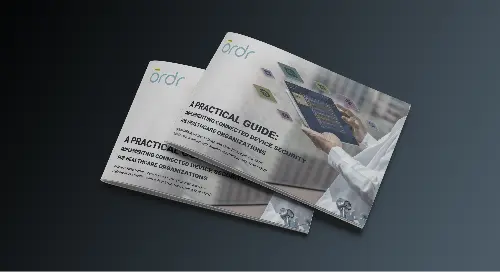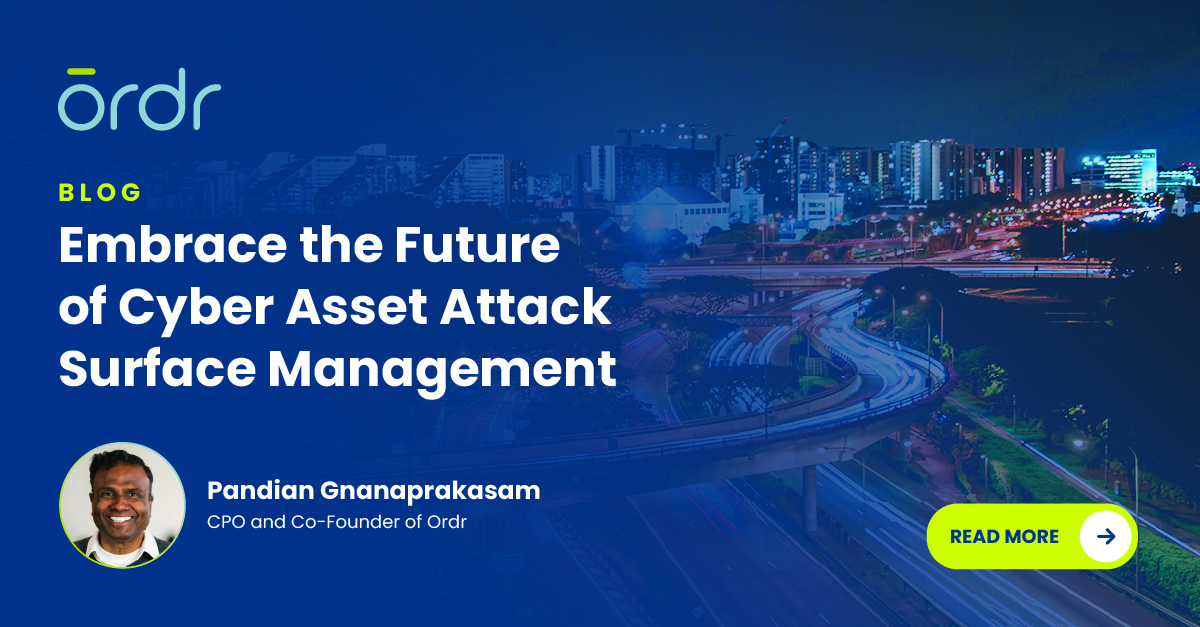If Ralph Waldo Emerson had been a CISO and not a poet, he might have said, “Like life, Zero Trust is not a destination, but a journey.” And he’d be right, of course. For all the love Zero Trust has gotten from zealous marketers who promise that an investment in their cybersecurity product will deliver Zero Trust, the fact is that enterprises are far too dynamic for any one product to achieve that state. In fact, Zero Trust is not a static state, but an ideal that must be as dynamic as the environment in which it prevails.
Dynamic Environment, Dynamic Tool
When Ordr talks about Zero Trust, it is within the context of the challenges of protecting organizations that are increasingly reliant on connected devices to manage and run their operations. Devices within the domains of the Internet of things (IoT), Internet of medical things (IoMT), and operational technology (OT) are, by their nature, dynamic. They connect to and disconnect from networks often, finding a home where they are needed. They move around and increase an enterprise’s attack surface as they aggregate and grow in number. That kind of changeability and complexity requires a security platform like Ordr that has the speed and intelligence to discover, identify, and secure every device operating in the network.
According to the FBI, healthcare was the industry most targeted by ransomware gangs in 2021.
This is especially important for healthcare organizations that rely on IoT, IoMT, and OT devices to manage their facilities and provide a high level of care to patients. These devices gather data, provide diagnostics and therapeutic functions, and automate activity at all levels. But those devices also expand the attack surface of the organizations that deploy them, and threat actors have been taking advantage. According to the FBI, healthcare was the industry most targeted by ransomware gangs in 2021, affecting more than 550 organizations, compromising the protected health information (PHI) of more than 40 million people, and inflicting financial losses of $6.9 billion.
Wisdom of Old CISOs
Standing up to the threat requires thoughtful investments in security tools that address the specific needs of each organization, backed by a deliberate and strategic plan that maximizes the efficacy of those tools to achieve and maintain a continuous Zero Trust posture. And as Emerson said Zero Trust is a journey, another famous CISO, philosopher Lao Tzu said the journey of a thousand miles to Zero Trust begins with a single step. Fortunately for healthcare organizations looking to protect their IoT, IoMT, and OT assets, that single step is one of five in a connected device security maturity model that Ordr has outlined in a new ebook entitled A Practical Guide: Implementing Connected Device Security for Healthcare Organizations.
Five Easy Pieces
Authored by Gartner veteran and Ordr strategic advisor Brad LaPorte, with close consultation by many of our own subject matter experts, “A Practical Guide” includes recommended actions, technical considerations, and helpful insights that complement each of the five steps of maturity for connected device security, which are:
- Step One – Asset Visibility: a foundational exercise that must be launched and operationalized to discover and classify every device, and map its flows.
- Step Two – Vulnerability and Risk Management: used to extend the capabilities of the organization to effectively see and know about all the devices present in the environment.
- Step Three – Reactive Security: prioritization of activities necessary, such as blocking specific inbound and outbound communications to mitigate risks, risks.
- Step Four – Proactive Security: establish automated policies to ensure rapid threat detection and prevention, and begin to implement proactive Zero Trust segmentation policies.
- Step Five – Optimized Security: use of real time analysis and micro-segmentation to automate dynamic policy changes, scale protections reflective of an environment’s current state, and enable continuous improvement.
As you can see, each step in the maturity model builds on the previous step in sequence; there are no shortcuts. And the speed with which an organization progresses from Step One to Step Five will differ. It’s also important to recognize that, when starting from a place of no or incomplete connected device visibility, each step of the journey represents a significant improvement toward Zero Trust. And when a connected device security strategy is implemented and fully matured, it can be applied holistically across an entire organization or focused on multiple critical areas, in sequence or in parallel.
When starting from a place of no or incomplete connected device visibility, each step of the journey represents a significant improvement toward Zero Trust.
If you want to read A Practical Guide: Implementing Connected Device Security for Healthcare Organizations, you can download it here with our compliments. We’ve scheduled a webinar for January 19 to discuss the topic. Or, if you want to talk to one of our healthcare connected device security experts (or an expert in any other industry), get in touch. We’d love to hear from you.
Interested in Learning More?
Subscribe today to stay informed and get regular updates from Ordr Cloud




